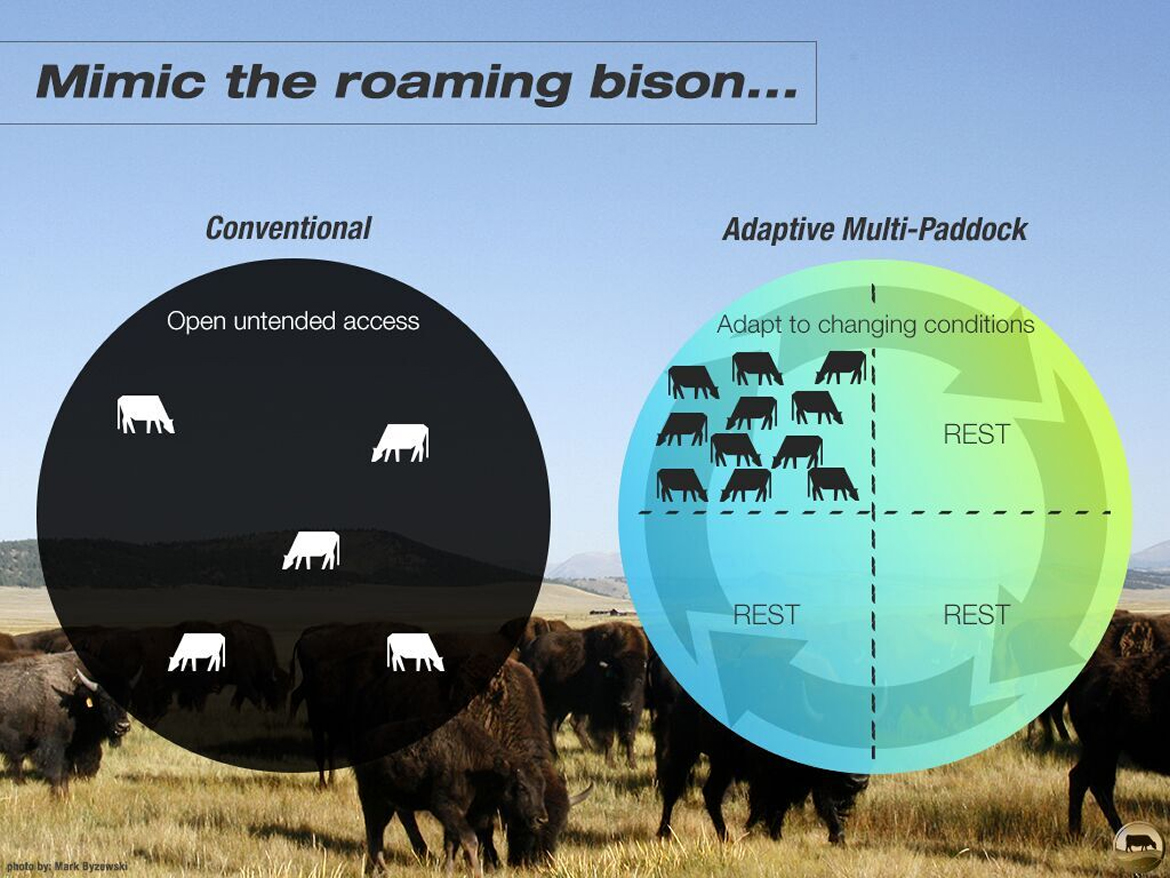The science of animal, grass and soil ecosystem is complex. There’s more that we don’t know than what we do, but we’re beginning to understand the basics. In short, AMP grazing works because it actively regenerates soil by capturing more sunlight.
If grass is left to grow, as the season goes on, growth tapers off. While the grass is growing, the plant roots ‘leak’ carbon compounds to soil microbes in a barter economy that trades sugar for nutrients that the grass needs to grow. If a cow takes a bite, then keeps coming back, the good grasses are overgrazed and the soil becomes bare. At the end of the season, dead grass decays back into CO2 so little carbon accumulates in the soil.
However, if cows are grazed intensely but briefly through small paddocks, consuming no more than 50% of total leaf volume, rest periods are increased and grass growth becomes more vigorous. More grass growing means more carbon leaking into the soil root zone to feed microbes in exchange for nutrients. Longer rest periods also lead to greater plant diversity and complexity that creates greater microbial diversity and complexity. Most of the grass and water the cows eat ends up back on the pasture as manure and urine – now more evenly spread. Some of the grass gets trampled into the soil, too, where it can also be food for microbes. Some of this decomposing organic matter is respired back into the air, but some of it adds to the ‘leaky’ carbon building up in the soil system. As the soil organic matter builds, the soils develop more porosity and permeability that allows more water to infiltrate. Of course, the extra water also helps grow more grass, too. This process mimics the system created by nature when large herds of ruminants roamed the grasslands of the Earth.
Repeated over and over, this cycle leads to more net grass growth and more carbon build up in the soil, which in turn brings back more nutrients to the grass so it can grow faster, which pumps more carbon into the soil, which holds more water. The regrown grass is also more nutritious for the animal because of the better nutrient cycle between roots and microbes. You get the idea – the system regenerates itself.
So simply put, a focus on growing better soil, grows more, better grass, which produces more, better beef faster.
See our Resources page for links to more information.


